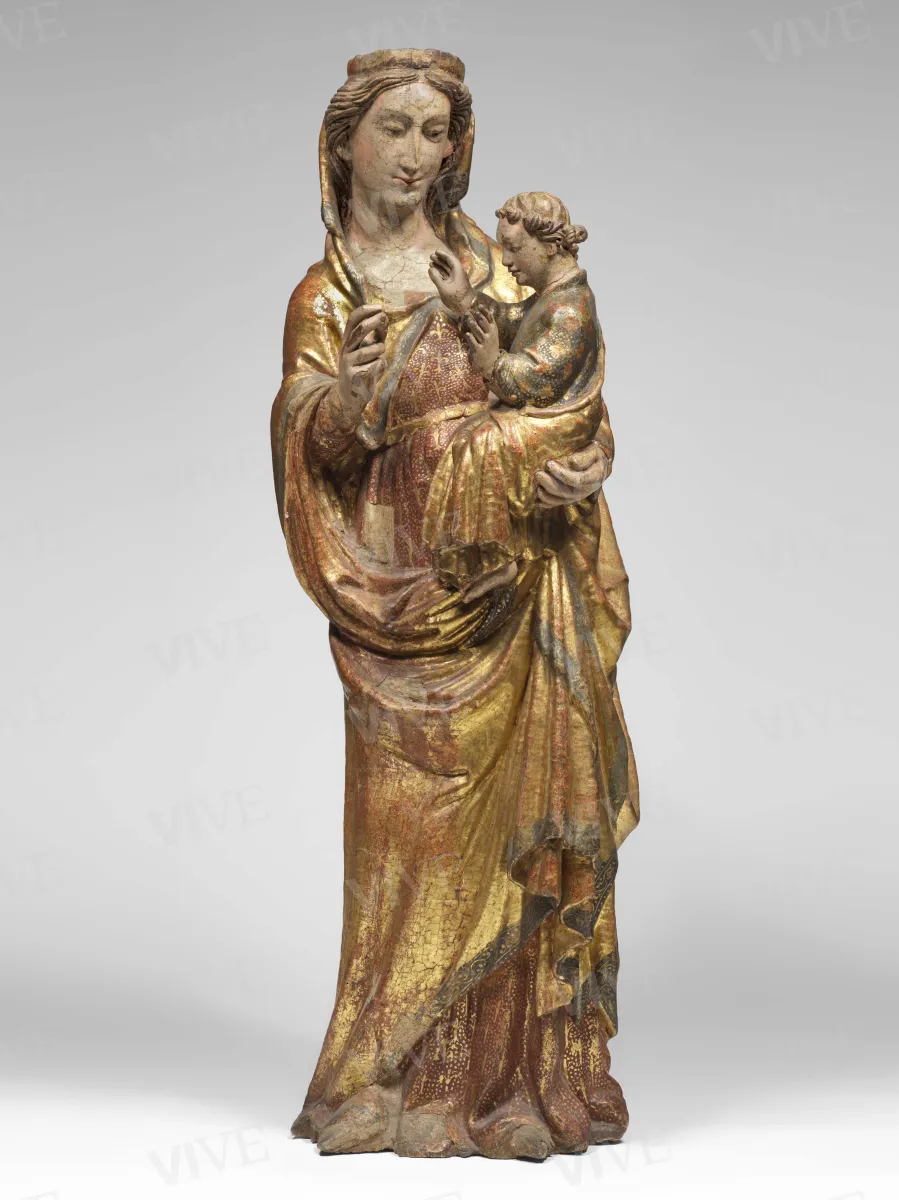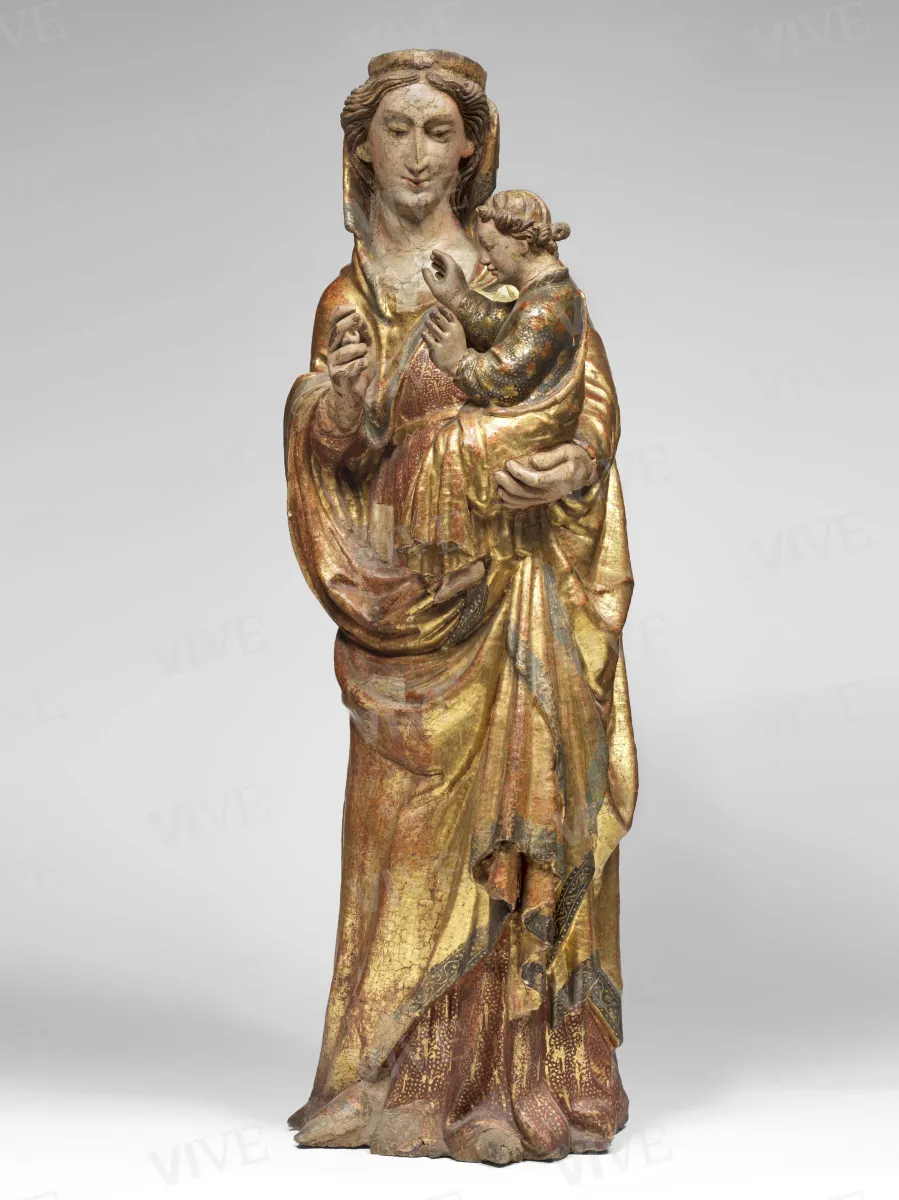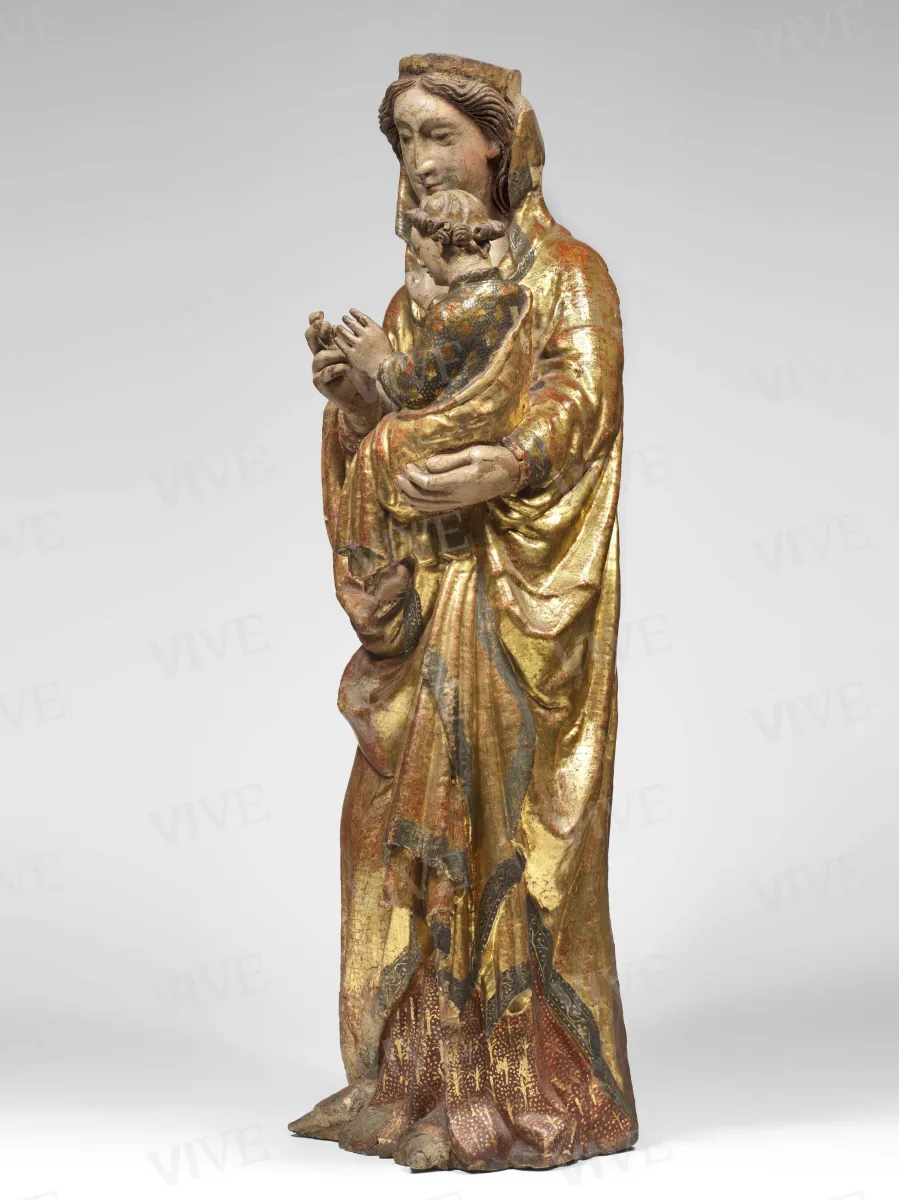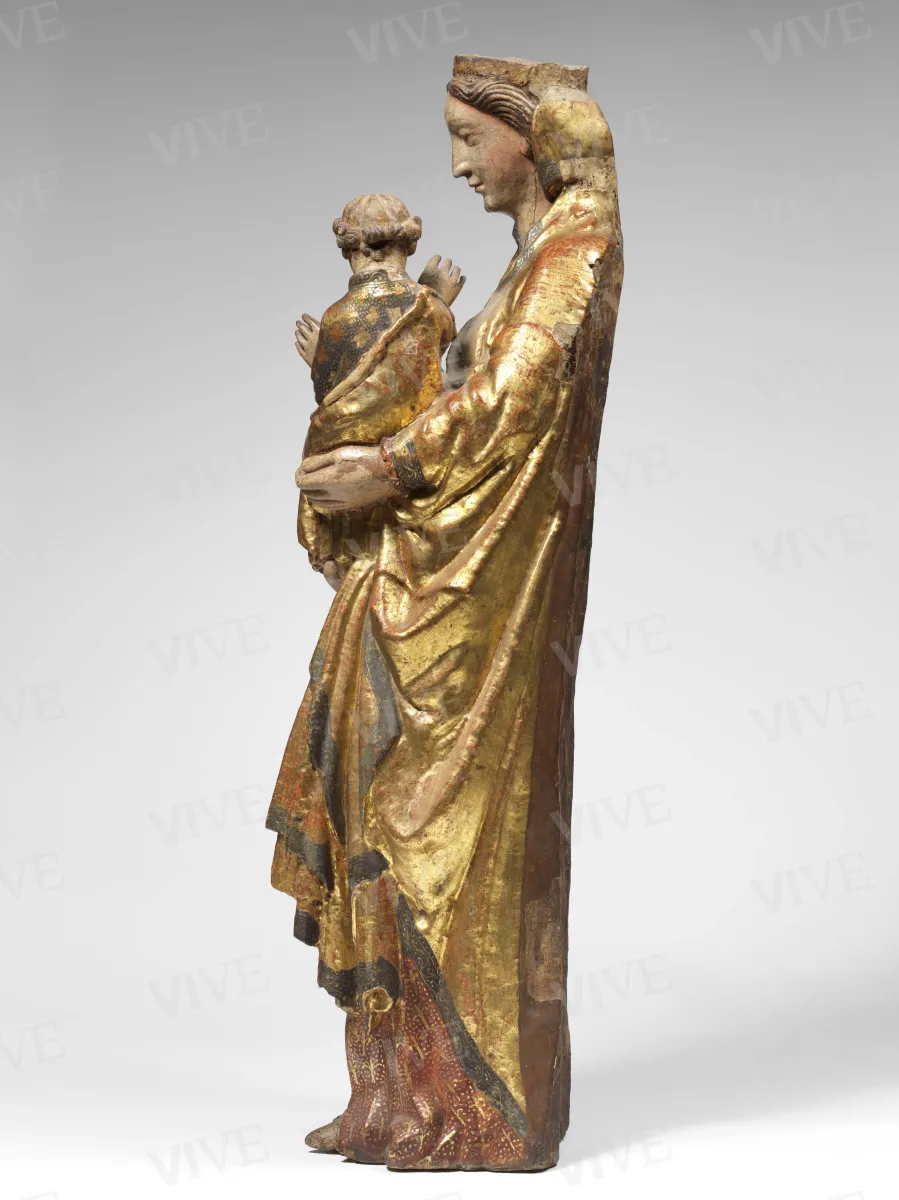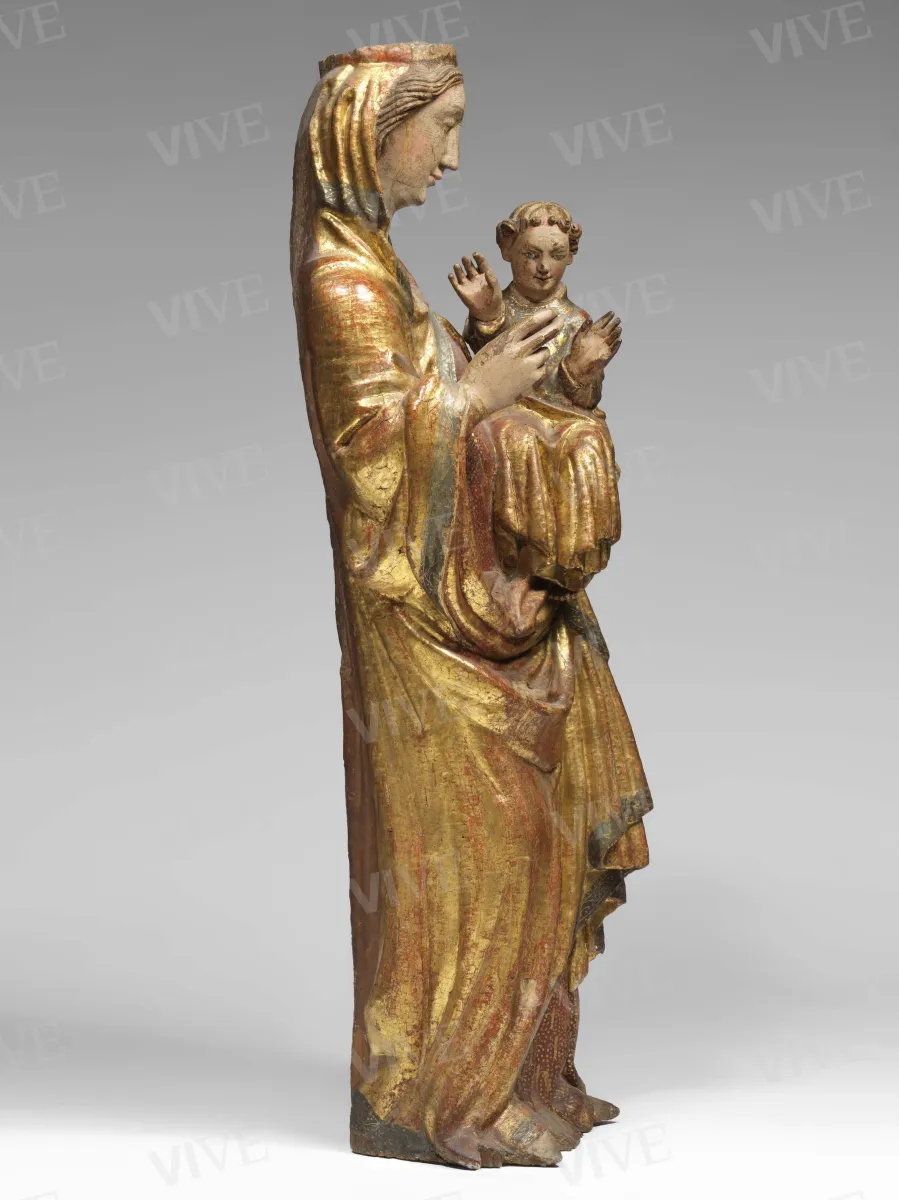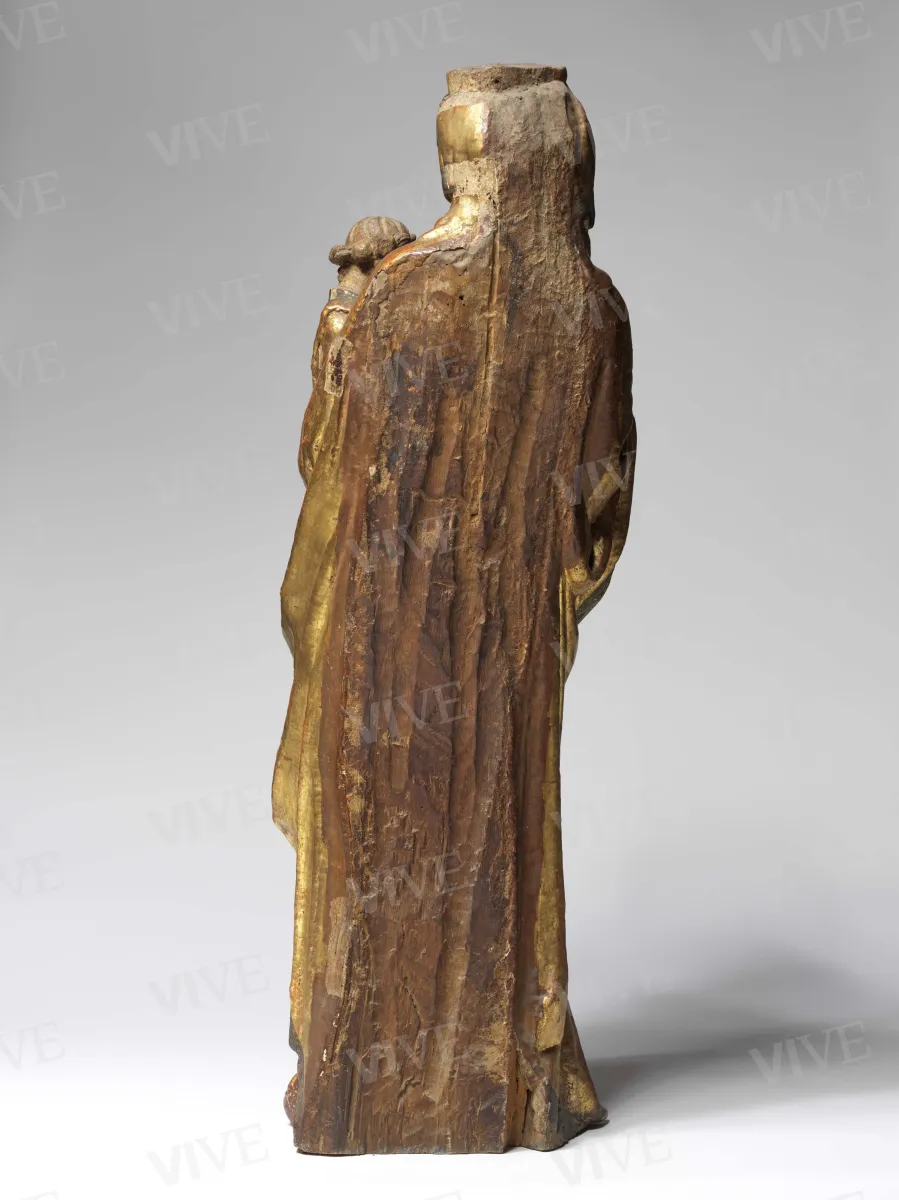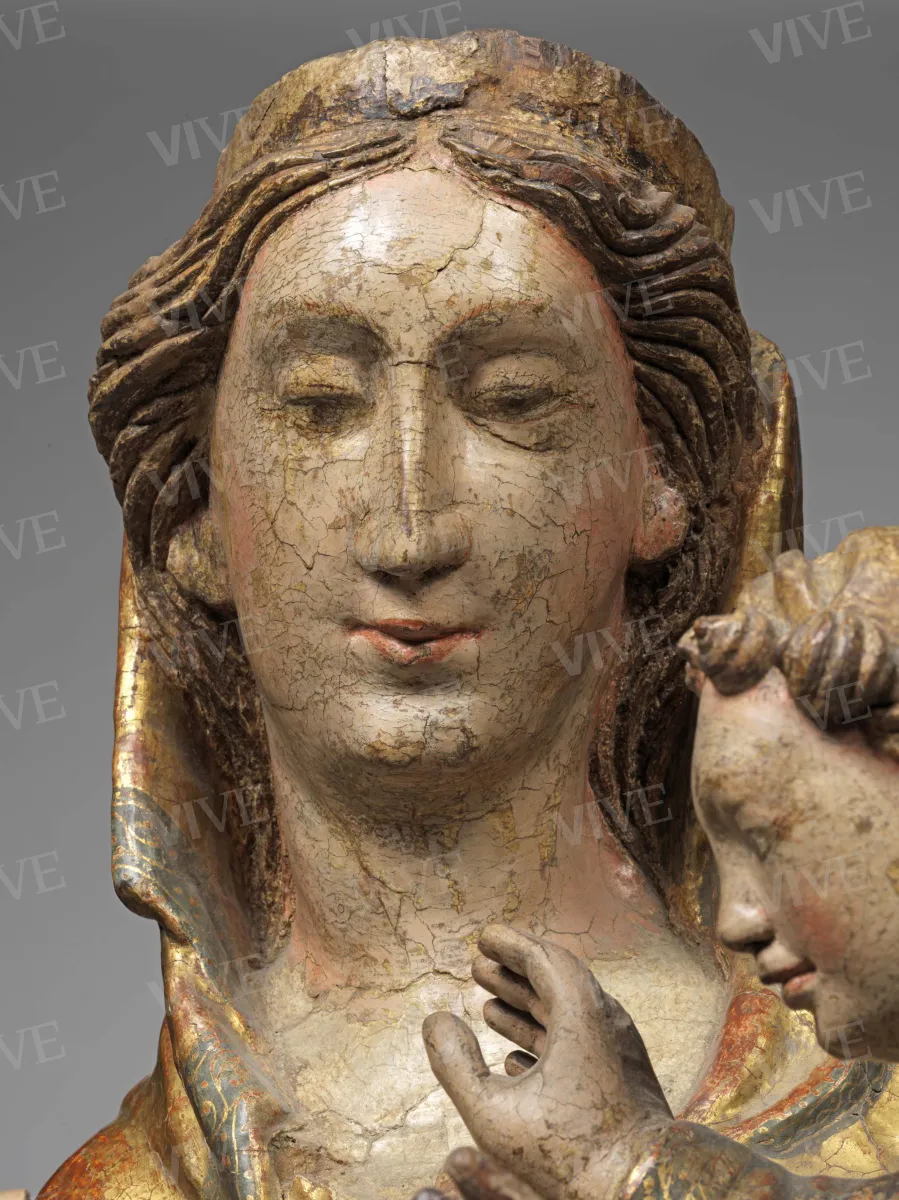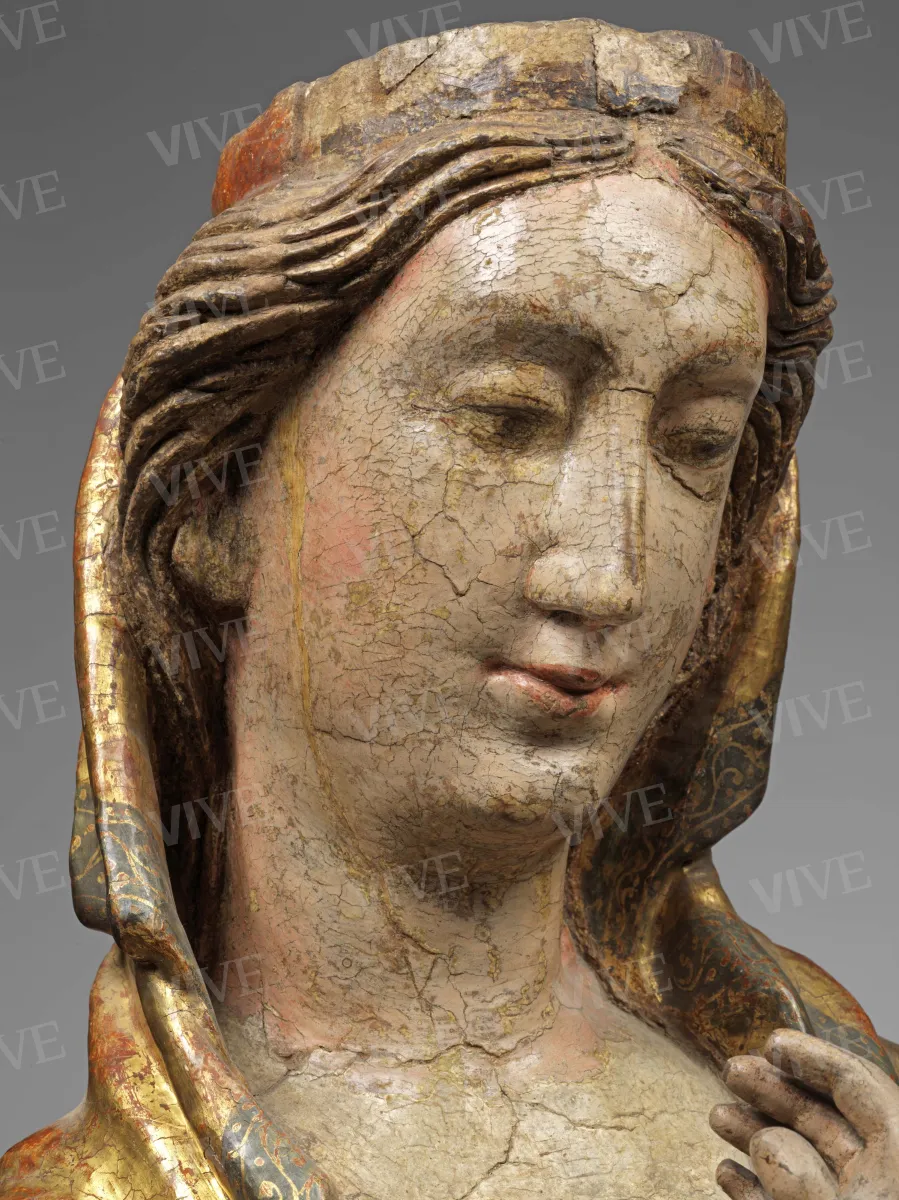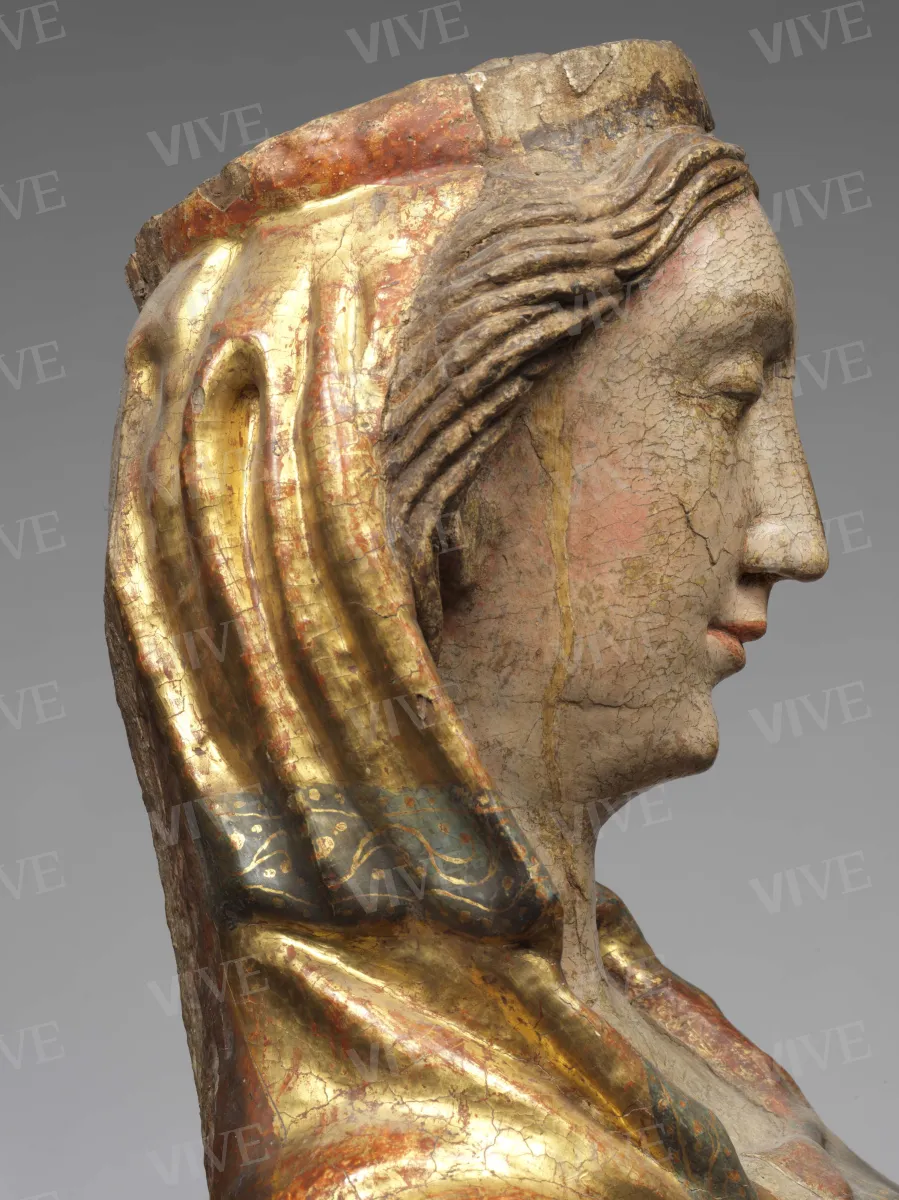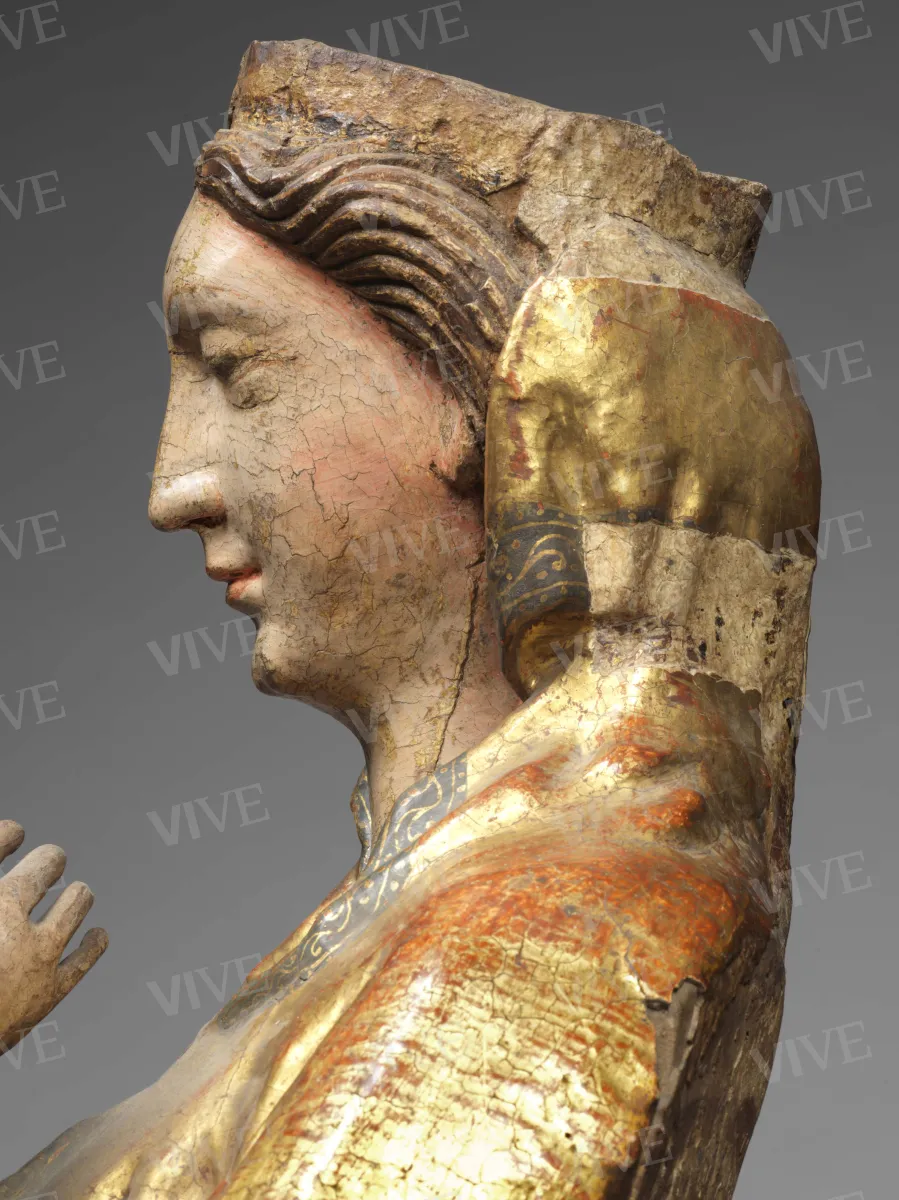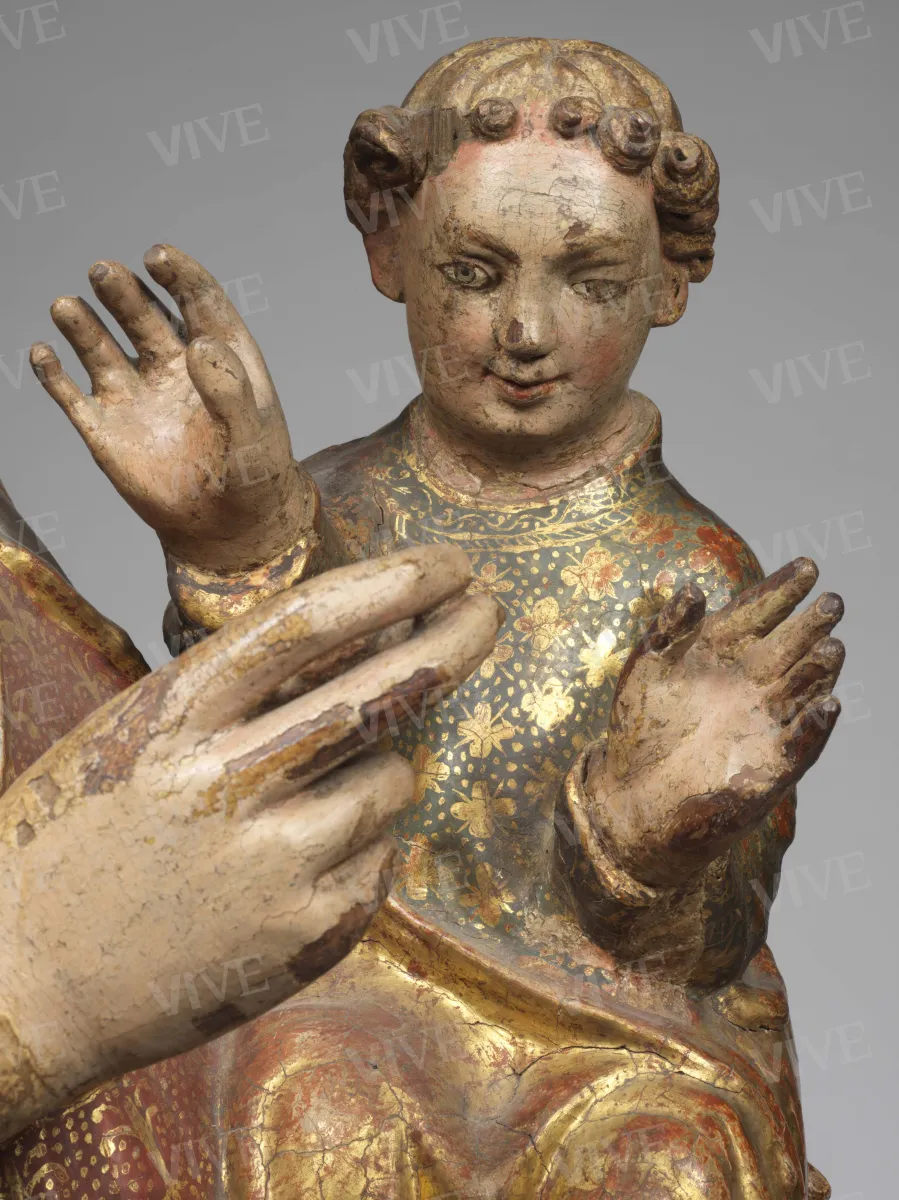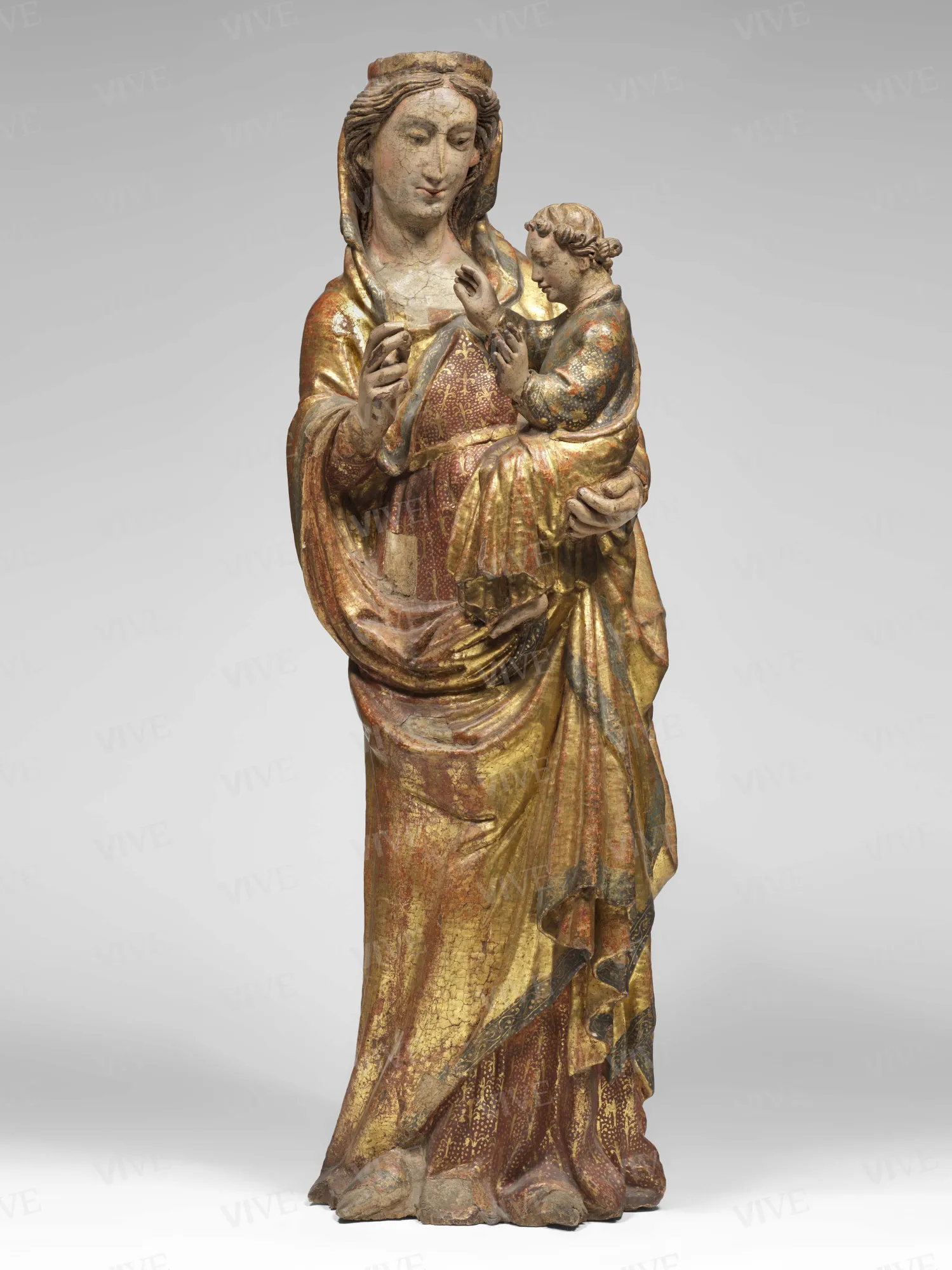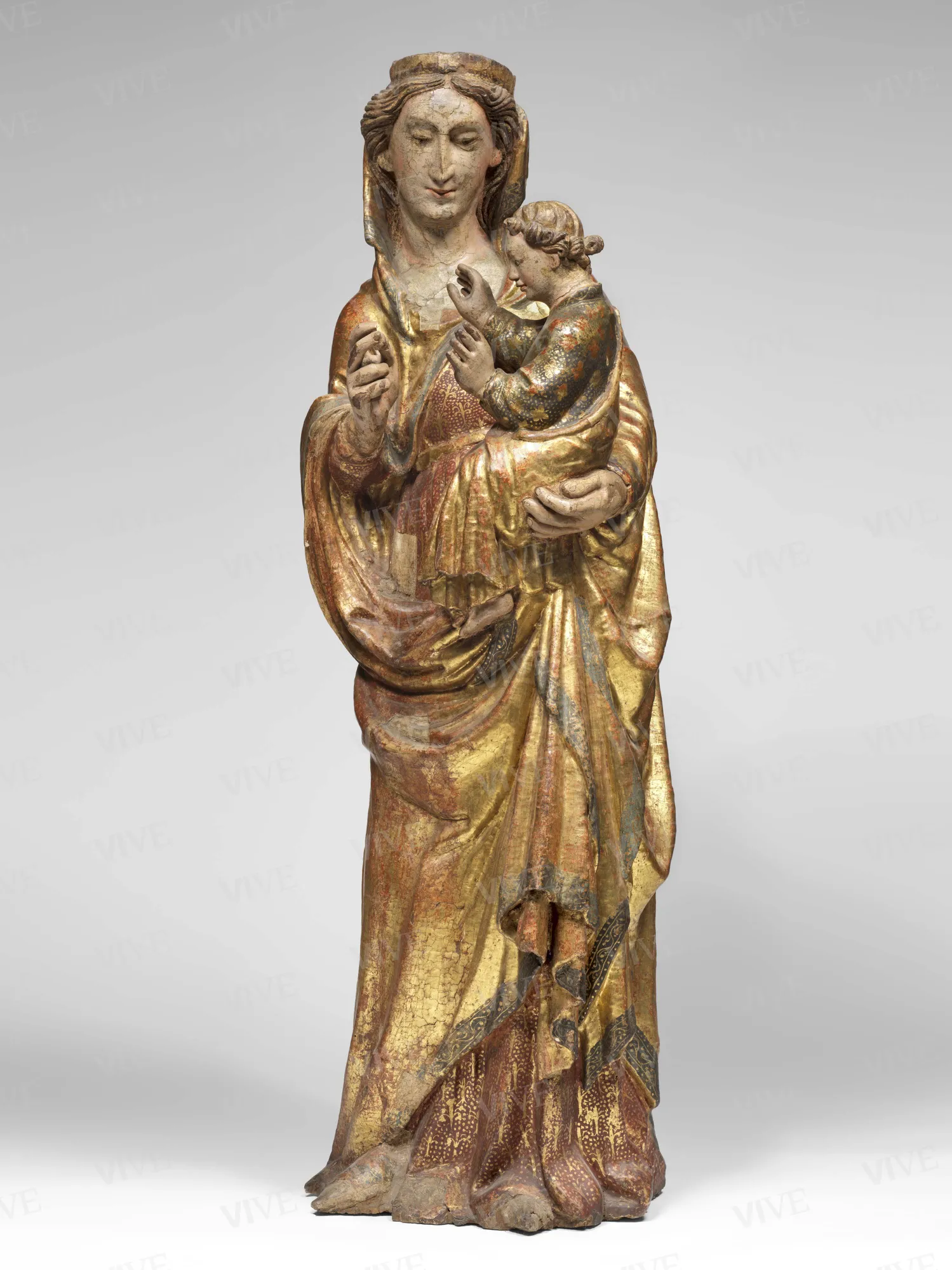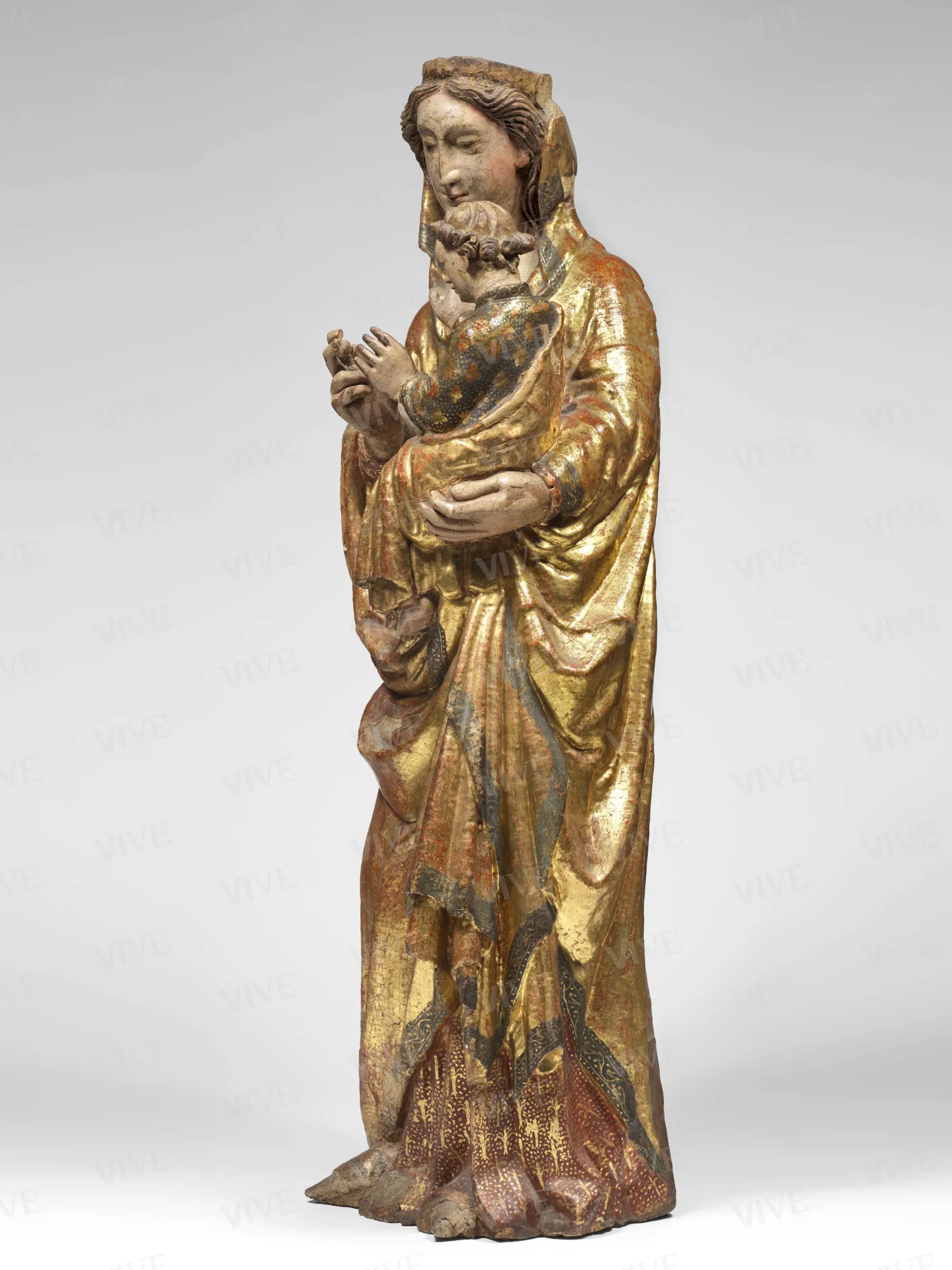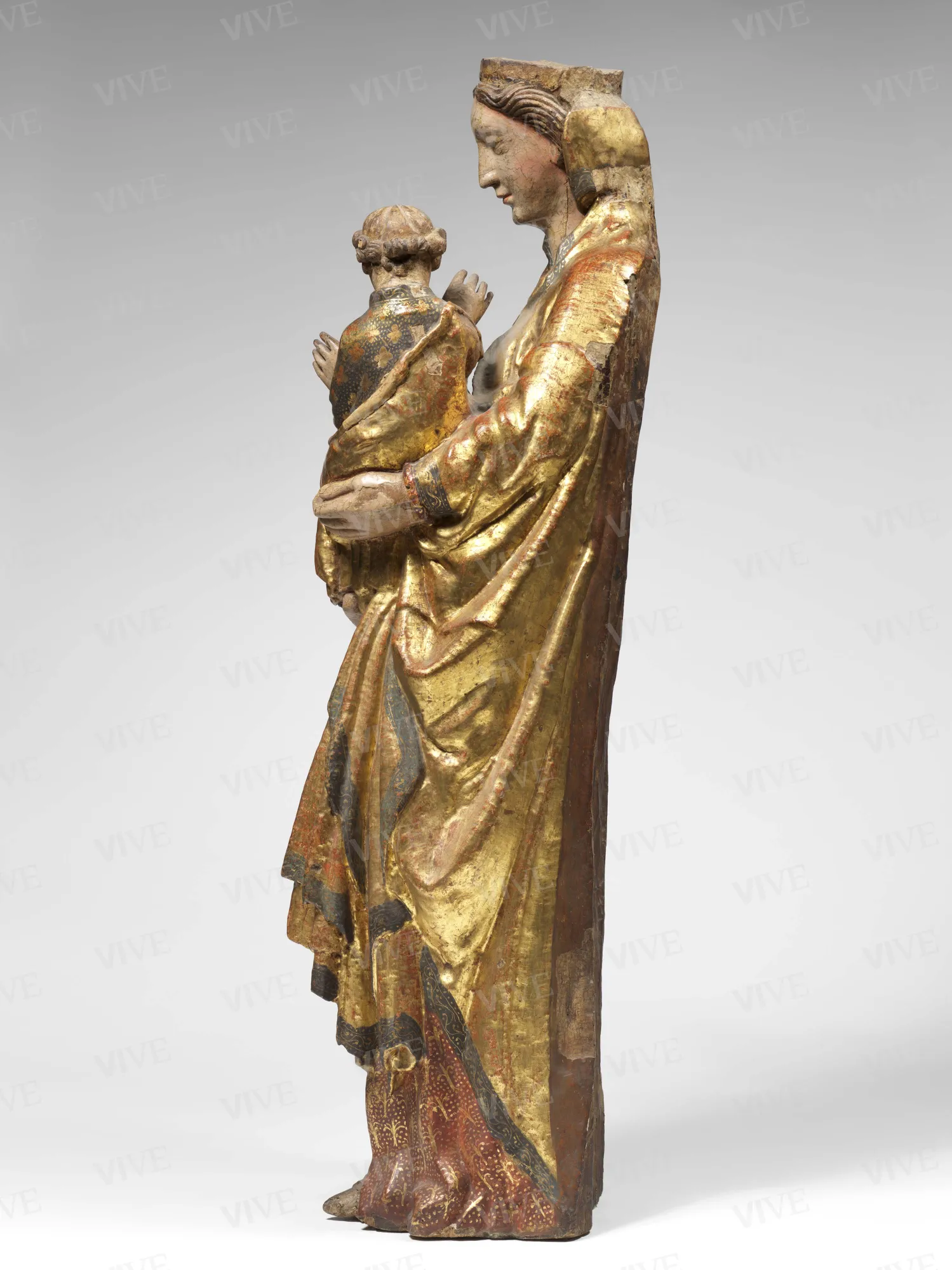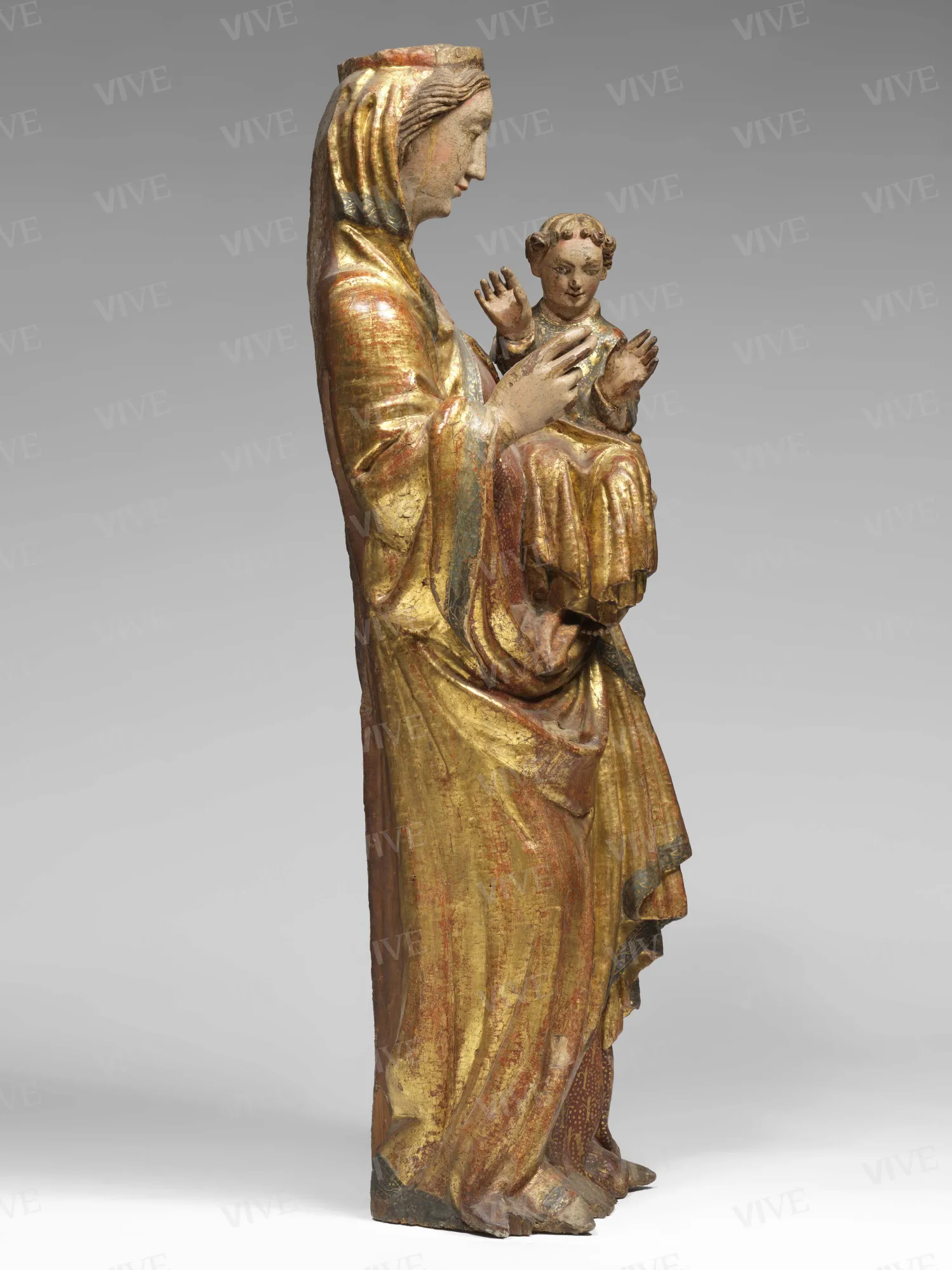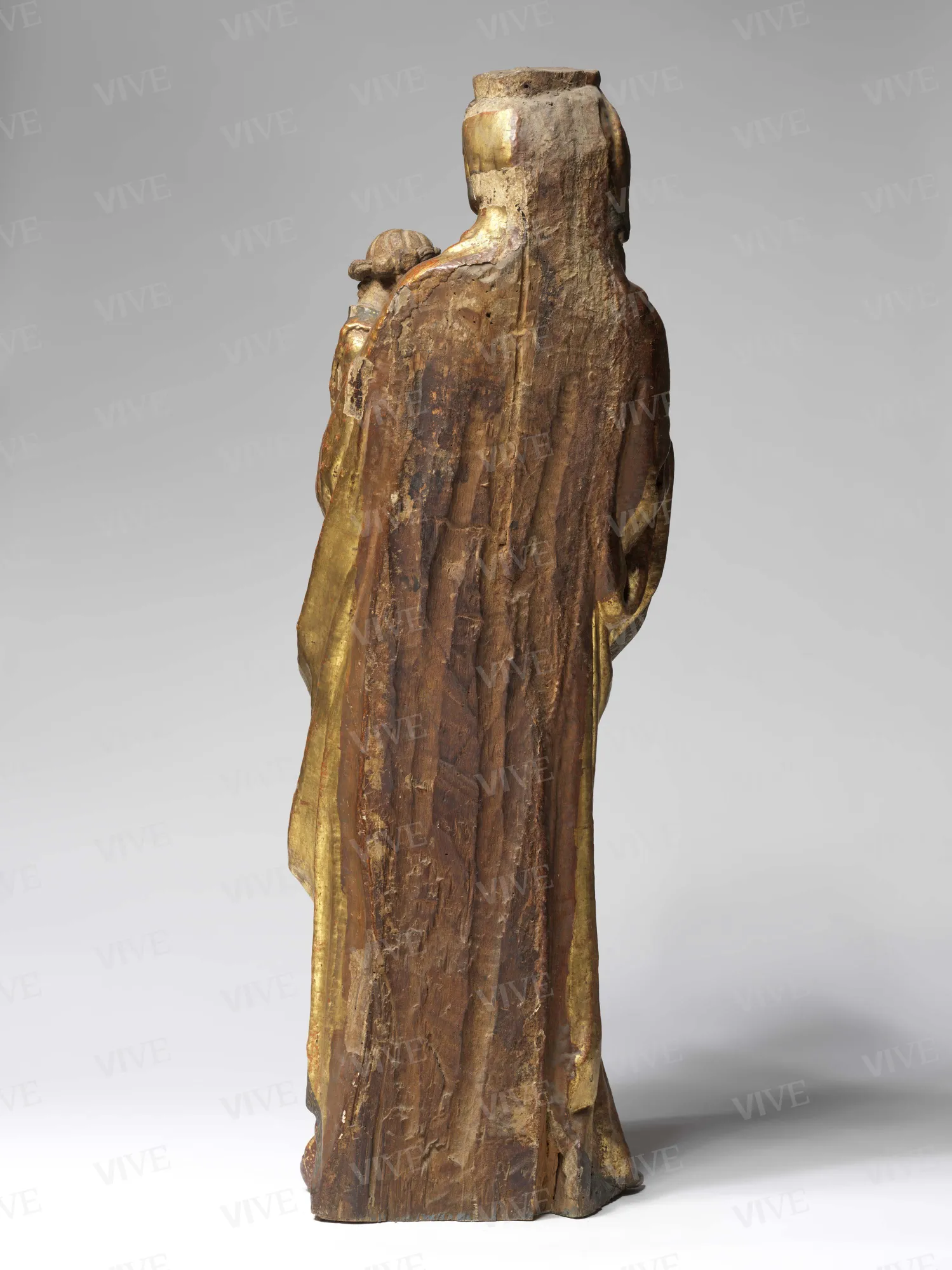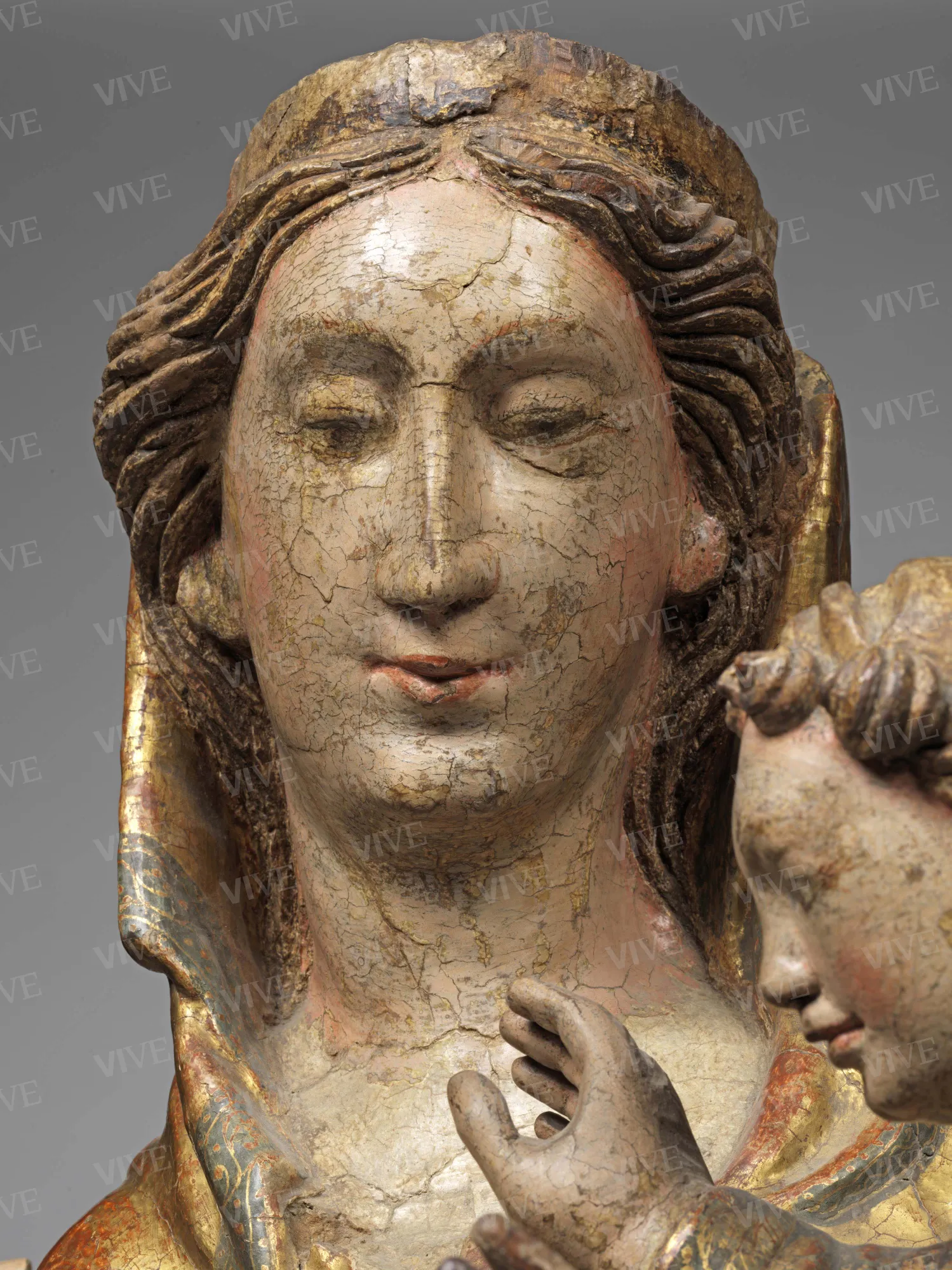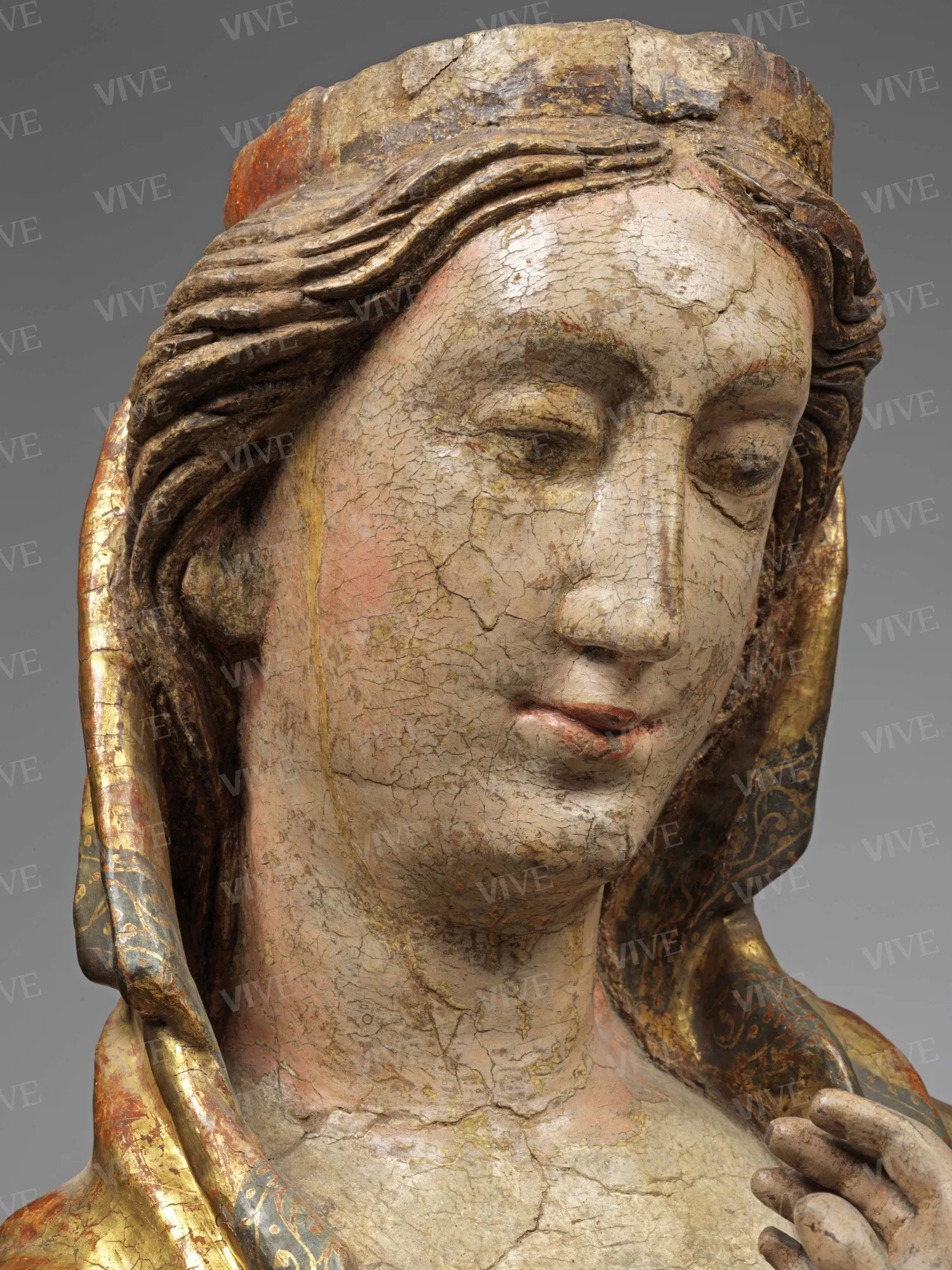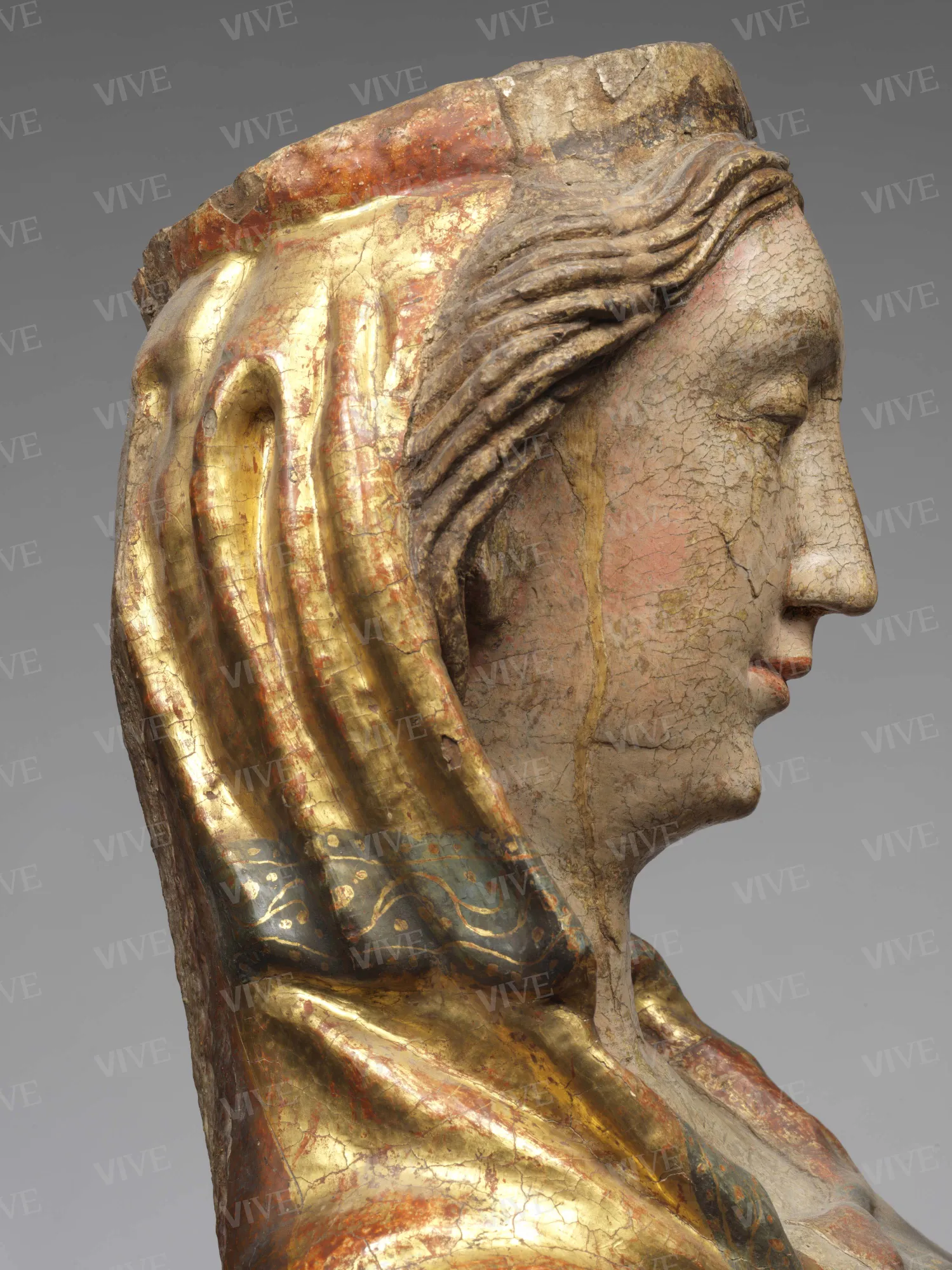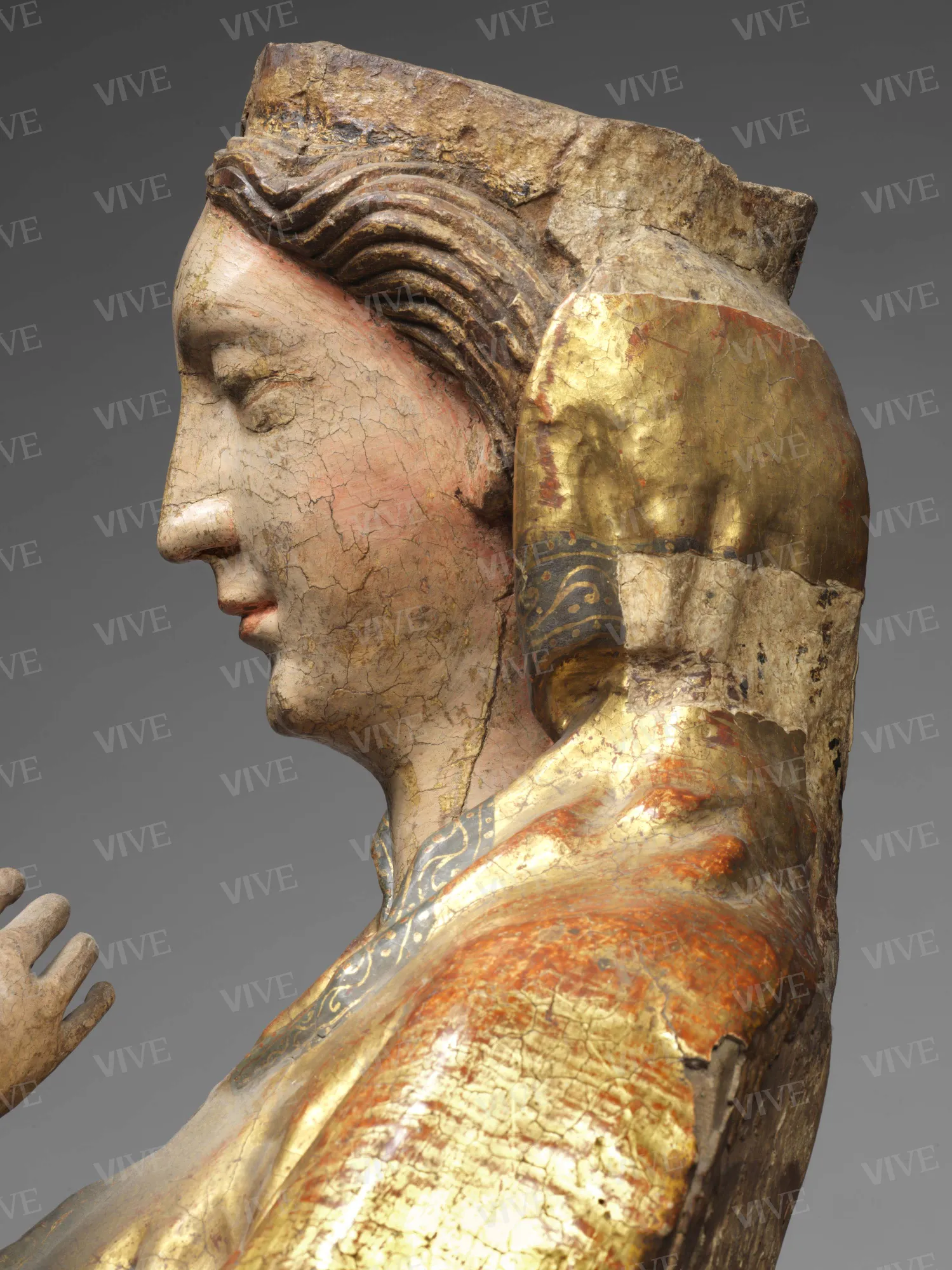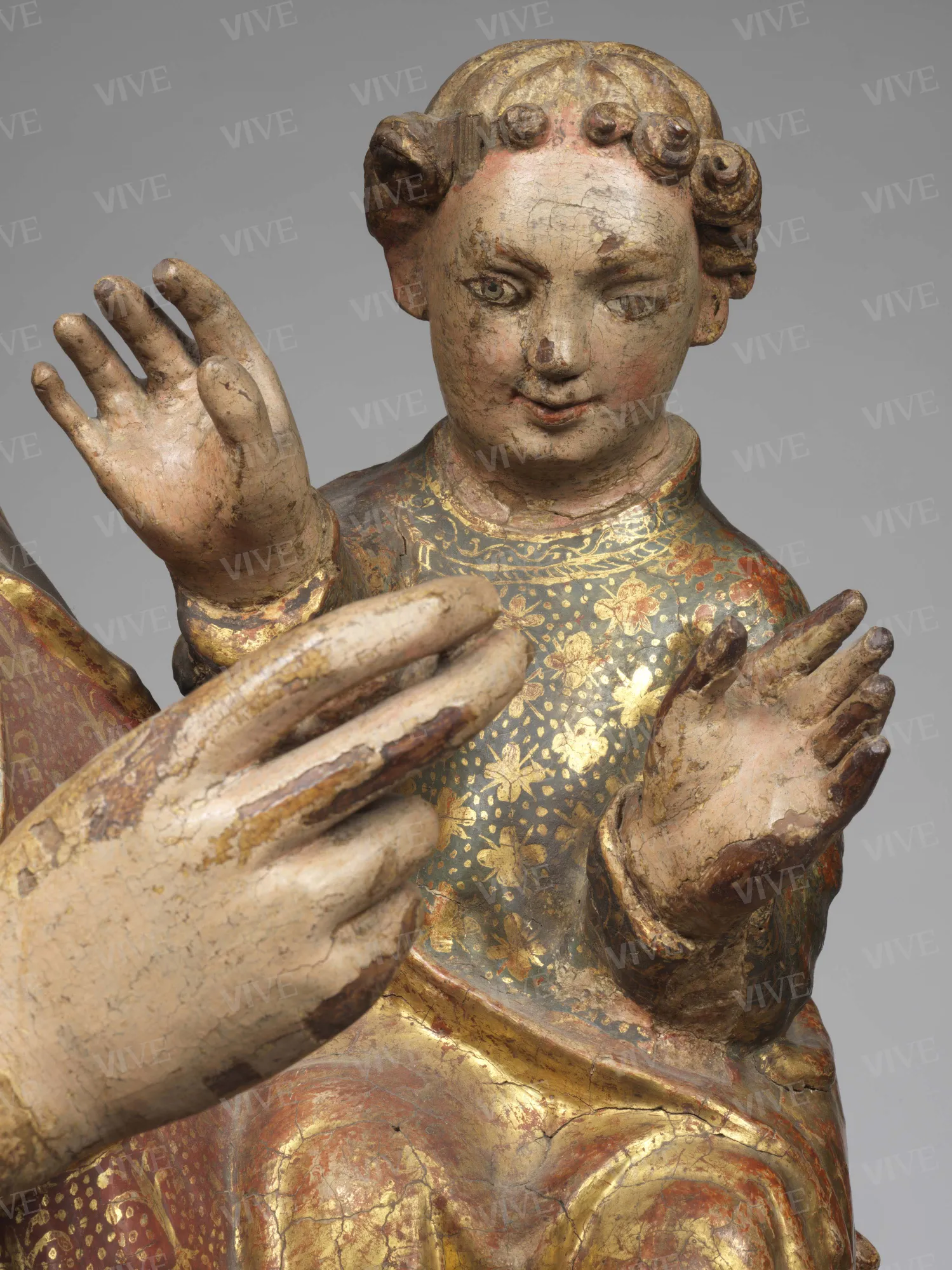Standing Madonna and Child (Madonna of Pacentro)
Abbruzzo sculptor Late-14th century
The figure of the standing Madonna is slightly arched to the right, her hips slightly thrust forward; she is using her left arm to steady the Child, whose gaze is turned toward the Mother's right hand. A large golden cloak, edged in lapis lazuli blue, envelops the Virgin’s figure and also covers part of her head, adorned with a partially extant crown. The Child is also covered in a golden mantle, below which is a deep blue tunic with phytomorphic decorations and gold buttons. The Virgin's tunic is cinnabar red with fleurs-de-lys.
The figure of the standing Madonna is slightly arched to the right, her hips slightly thrust forward; she is using her left arm to steady the Child, whose gaze is turned toward the Mother's right hand. A large golden cloak, edged in lapis lazuli blue, envelops the Virgin’s figure and also covers part of her head, adorned with a partially extant crown. The Child is also covered in a golden mantle, below which is a deep blue tunic with phytomorphic decorations and gold buttons. The Virgin's tunic is cinnabar red with fleurs-de-lys.
Details of work
Catalog entry
The work was purchased in 1924 by Vespasiano Pitassi in Pacentro (AQ) and initially thought to be an Abruzzi work of the fourteenth century (Hermanin 1925); it was later believed to be the work of Niccolò da Venezia and dated to the early fifteenth century by Santangelo (1954, 70). Carli (1960, p. 71) agreed with this hypothesis, although he later placed the work in a current he called Franco-Orvietan (Carli 1984; 2nd ed. 1988, 68). The sculpture displays all the characteristics of late fourteenth-century Abruzzi production, which is influenced by Gothic tendencies via Naples, the capital of the Kingdom. In this sense, particularly noticeable is the Virgin’s barely noticeable forward thrust, the elegant drape of the clothing, and the smiling expression of the figures.
Stefania Paone
Entry published on 12 February 2025
State of conservation
Good; almost all paint film extant. Damage to the Virgin's crown, only partially extant.
Restorations and analyses
Analysis of wood species (poplar and linden) performed by IVALSA-CNR in Florence;
pigment analysis performed by ICVBC-CNR in Florence.
References
Hermanin Federico, Il Palazzo di Venezia: museo e grandi sale; descrizione e catalogo dell’ appartamento di Paolo II, Bologna 1925, p. 34;
Mariani, Valerio, Sculture lignee in Abruzzo, Bergamo 1930, tav. 10;
Hermanin Federico, Il Palazzo di Venezia, Roma 1948, p. 267;
Santangelo Antonino, Museo di Palazzo Venezia. Catalogo delle sculture, Roma, p. 70;
Carli Enzo, Per il "Maestro della Santa Caterina Gualino", in Studi in onore di Giulio Carlo Argan, Roma 1984, pp. 59-69 (ripubblicato in Carli Enzo, Arte in Abruzzo, Milano 1998, pp. 66-68);
Fachechi Grazia Maria, Museo Nazionale del Palazzo di Venezia. Sculture in legno, Roma 2011, pp. 80-81.

